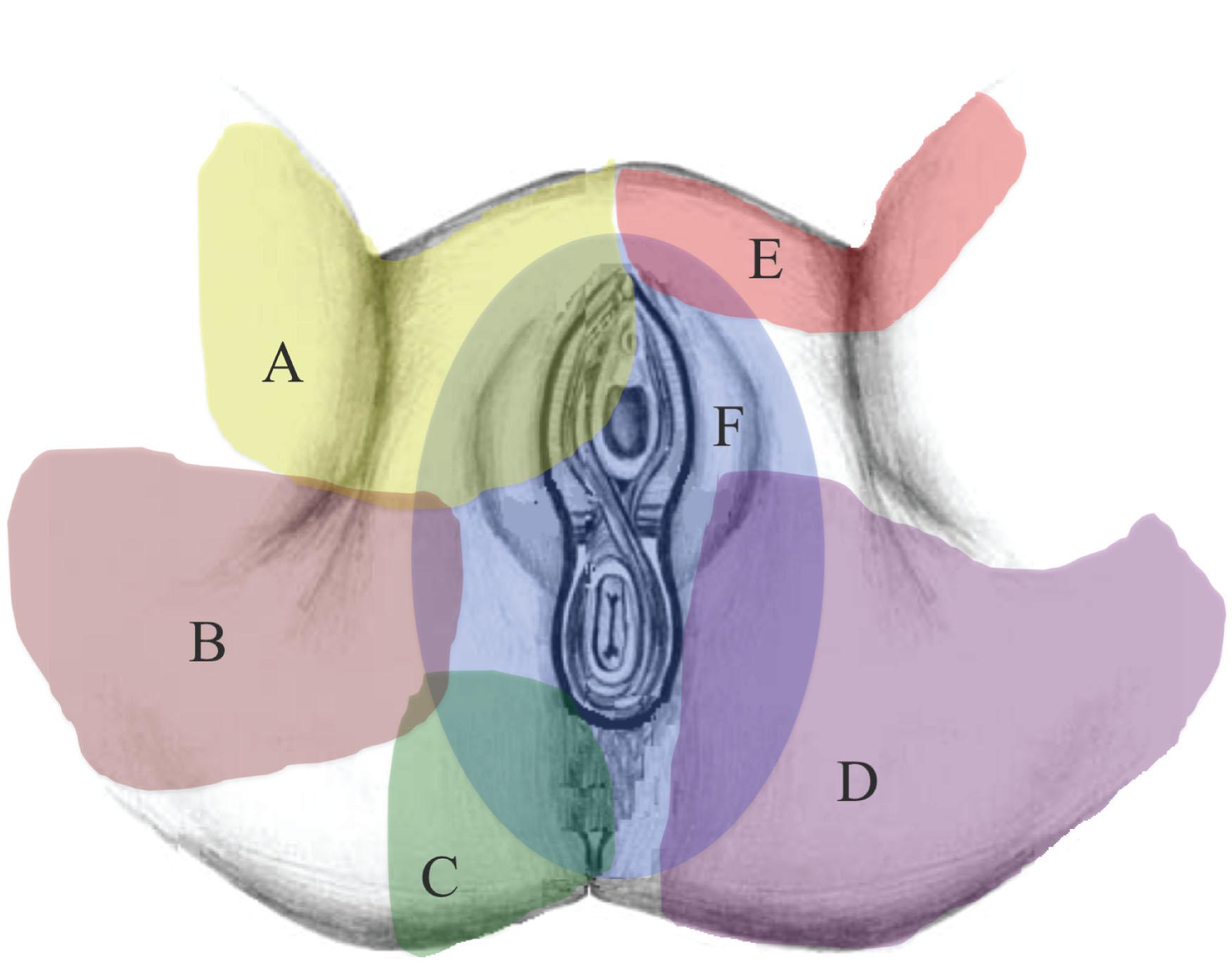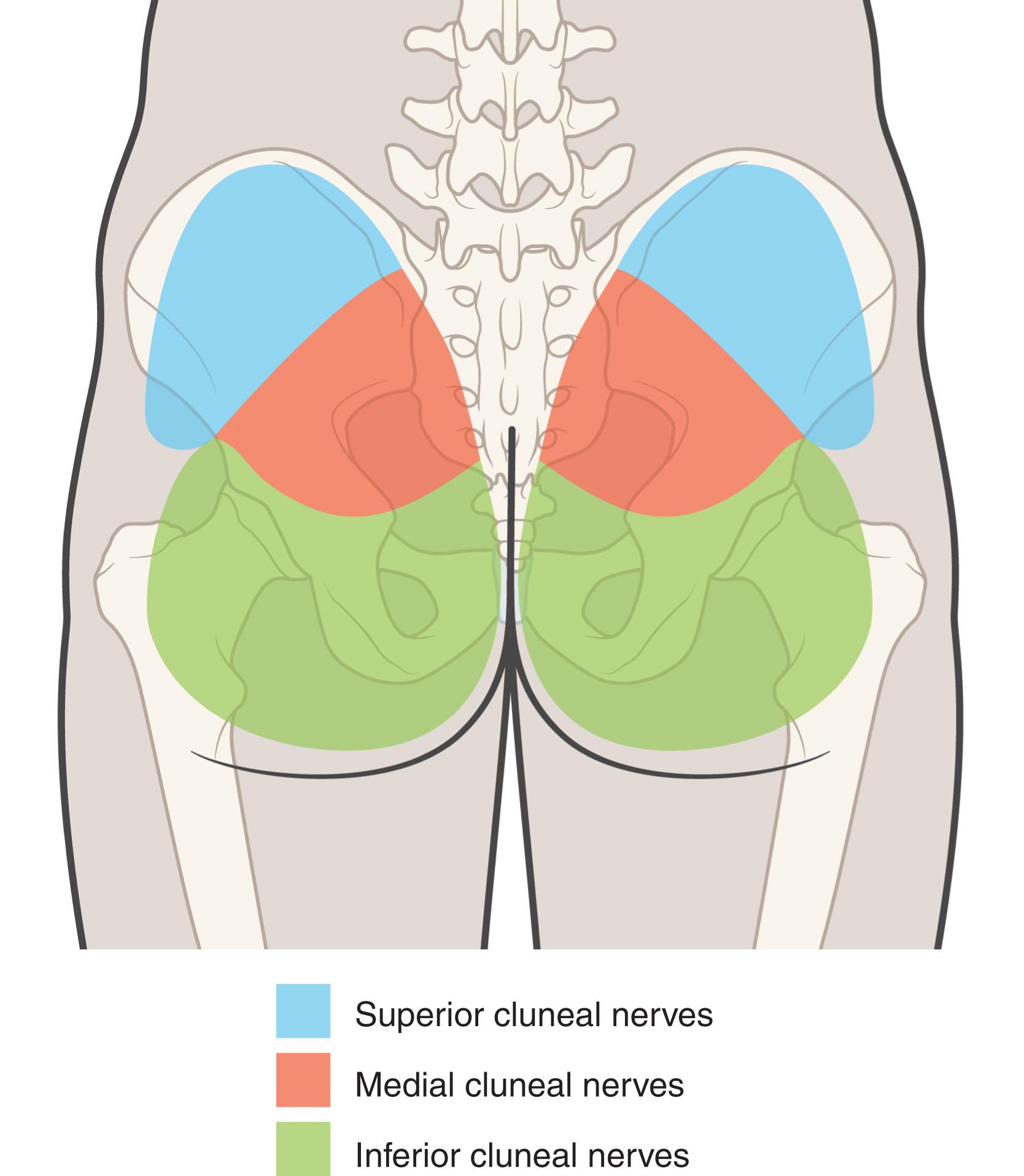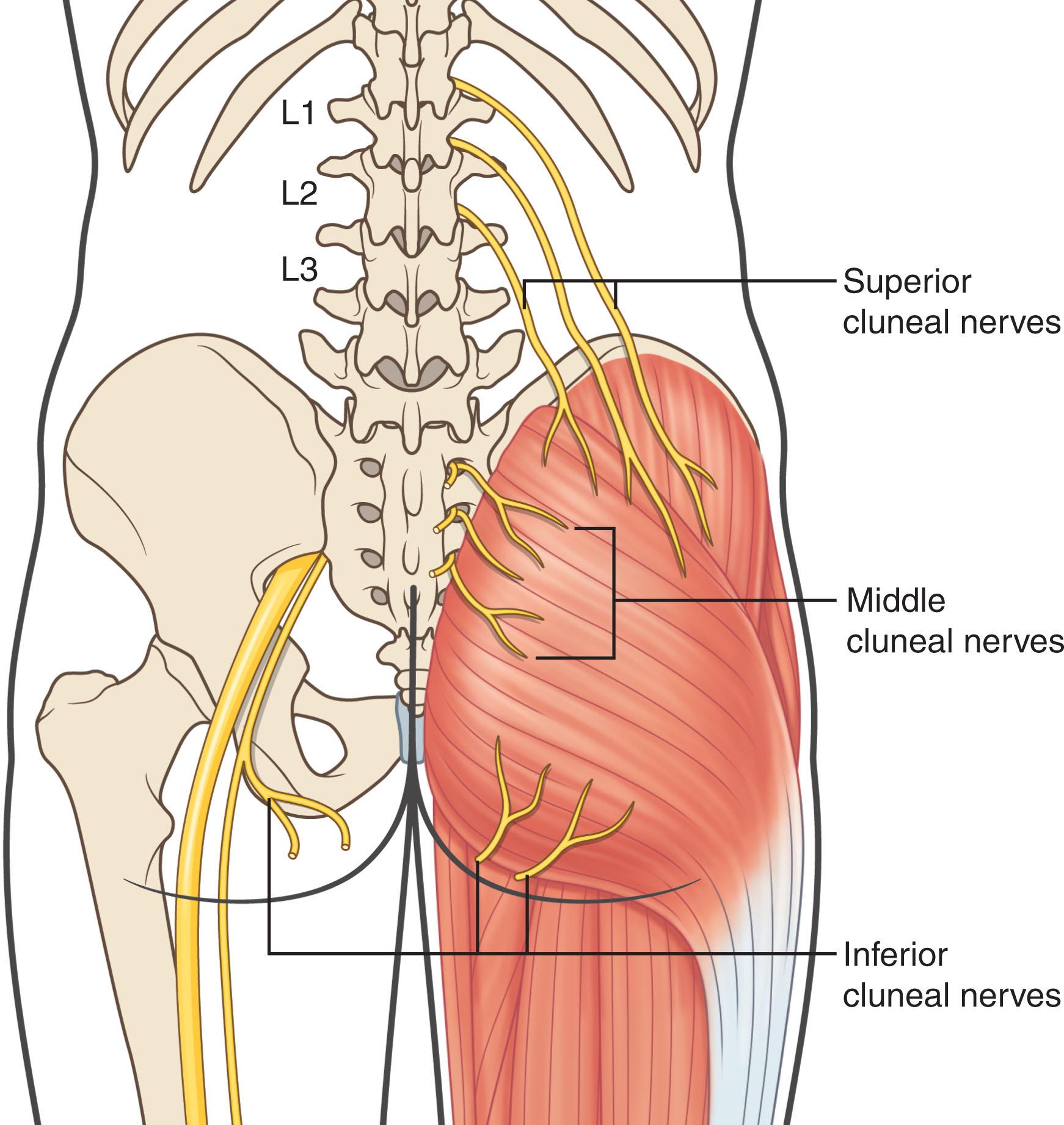Physical Address
304 North Cardinal St.
Dorchester Center, MA 02124
The inferior cluneal nerve (ICN) is a branch of posterior femoral cutaneous nerve, which innervates the perineum ( Fig. 21.1 ). Although chronic neuropathic perineal pain is often attributed to pudendal neuropathy, there may be some cases where the pain is along the lateral anal margins, scrotum, or labia majora. Pain in the inferior and medial parts of the buttocks with some referral patterns along the posterior thighs can be due to the ICN ( Fig. 21.2 ). The presentation can be confused with the pudendal nerve territory.


The ICN has overlapping areas of pain that should be clearly delineated based on a thorough history and examination.
ICN neuropathy will present itself as primarily burning, tingling, and numbness along the medial and inferior parts of buttocks, superficial skin of the scrotum, or labia majora. There may be a history of trauma with a fall onto the buttocks or chronic hamstring injury ( Table 21.1 ). There may also be direct compression of the nerve secondary to prolonged sitting on a hard surface or history of bicycle riding. Patients may also complain of dyspareunia, similar to patients with pudendal nerve pathology.
| Trauma | Fall onto buttocks; hamstring injury; intramuscular injection into gluteal muscle; piriformis trauma or injury |
| Direct compression of nerve | Sitting on a hard seat, bicycle riding |
| Myofascial compression | Piriformis spasm; gluteal muscle spasm |
The cluneal nerves are divided into three groups ( Fig. 21.3 ): superior or medial cluneal nerves, and inferior or lateral cluneal nerves.

The ICN is a branch of the posterior femoral cutaneous nerve of the thigh ( Table 21.2 ). S1, S2, and S3 sensory branches contribute to the ICN, which travels with the sciatic and the pudendal nerve through the sciatic notch. The ICN innervates the inferior one third of the buttocks, lateral anal rim, and lateral labia majora. It does not innervate the penis, clitoris, labia minora, or vagina.
| Origin | The nerves arise from the inferior portion of the posterior femoral cutaneous nerve of the thigh |
| General route | The posterior femoral cutaneous nerve is made up of the sensory branches of S1, S2, and S3. It travels through the sciatic notch and, after reaching the subgluteal area, gives rise to the inferior cluneal branch and the perineal branches. The nerves then go to the inferior edge of the gluteus maximus, travel anterior to it, and then circumvent and have a recurrent course behind the muscle, innervating its target areas |
| Sensory distribution | Provides cutaneous innervation to the inferior part of the buttocks, lateral anal region (but not the anus), and lateral region of the labia majora |
| Motor innervation | None |
| Anatomic variability | Rare |
Become a Clinical Tree membership for Full access and enjoy Unlimited articles
If you are a member. Log in here